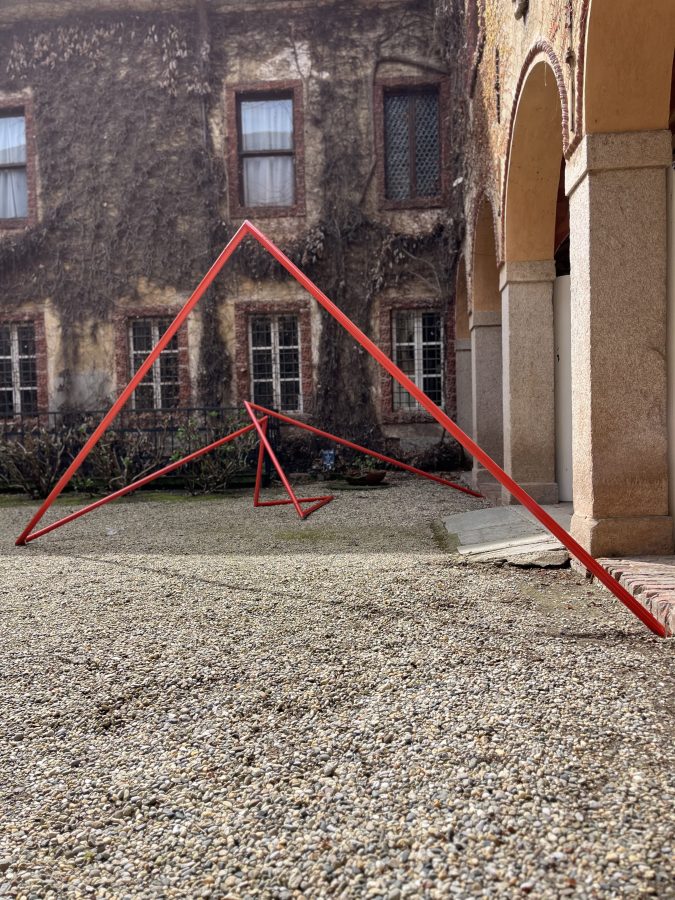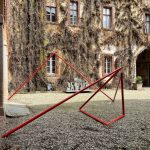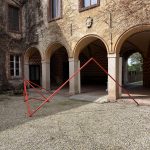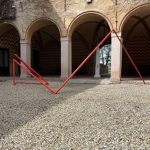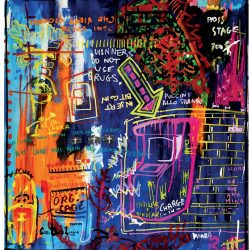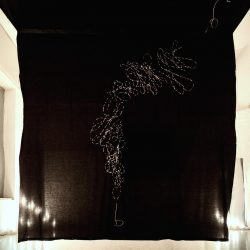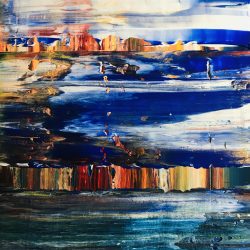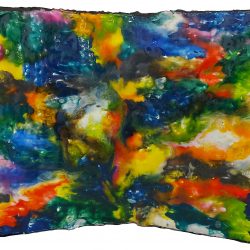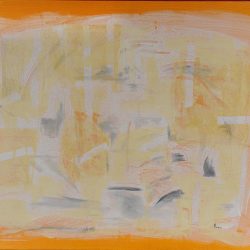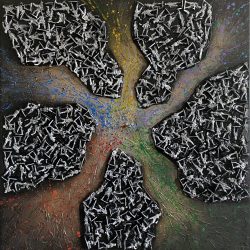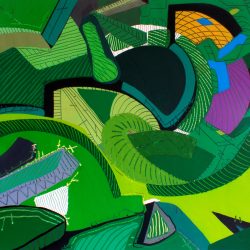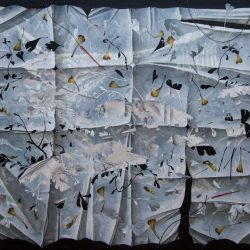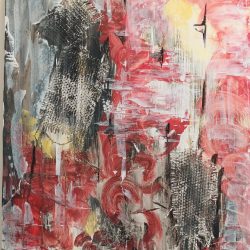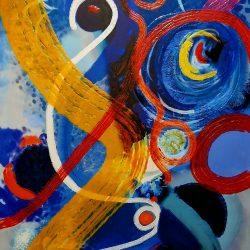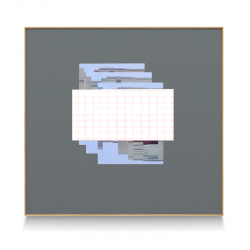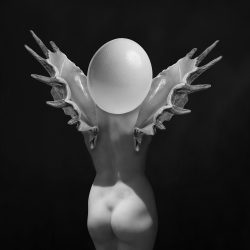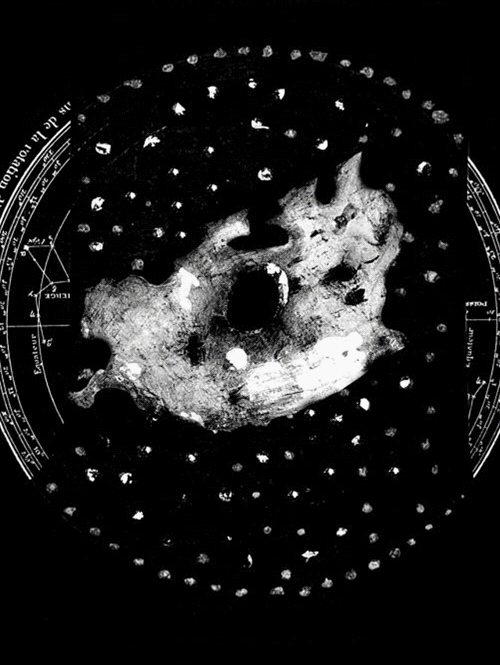work
SIGN MEDIEVAL-MODERN
| category | Installation |
| subject | Abstract |
| tags | |
| base | 500 cm |
| height | 200 cm |
| depth | 1200 cm |
| year | 2025 |
The work of Igor Grigoletto, made with tubular iron and placed in the courtyard of the Castle of Sartirana, is part of a critical dialogue between past and present, between memory and current events. Its essence is not only formal, but conceptual: the seemingly abstract geometric structure creates a visual connection between historical architecture and the contemporary language of minimal sculpture.
Iron, an industrial and modern material, contrasts with the stone and ancient plaster of the castle, marked by time and the progressive reabsorption of nature. The red lines of the installation cut through space as vectors of a dynamic energy that runs through history, evoking continuity between eras. There is no clear-cut rift between past and present: rather, the work suggests an interdependence, an indissoluble relationship that defines and structures us.
This reflection is as much aesthetic as philosophical: the present cannot exist without the past, just as the contemporary form of sculpture does not impose itself on historical space, but is grafted onto it, dialogues with it and perceptually transforms it. Grigoletto's work therefore moves between temporality and spatiality, between balance and tension, making visible the invisible bond that keeps us anchored to our history and at the same time projects us towards the future.
Iron, an industrial and modern material, contrasts with the stone and ancient plaster of the castle, marked by time and the progressive reabsorption of nature. The red lines of the installation cut through space as vectors of a dynamic energy that runs through history, evoking continuity between eras. There is no clear-cut rift between past and present: rather, the work suggests an interdependence, an indissoluble relationship that defines and structures us.
This reflection is as much aesthetic as philosophical: the present cannot exist without the past, just as the contemporary form of sculpture does not impose itself on historical space, but is grafted onto it, dialogues with it and perceptually transforms it. Grigoletto's work therefore moves between temporality and spatiality, between balance and tension, making visible the invisible bond that keeps us anchored to our history and at the same time projects us towards the future.



